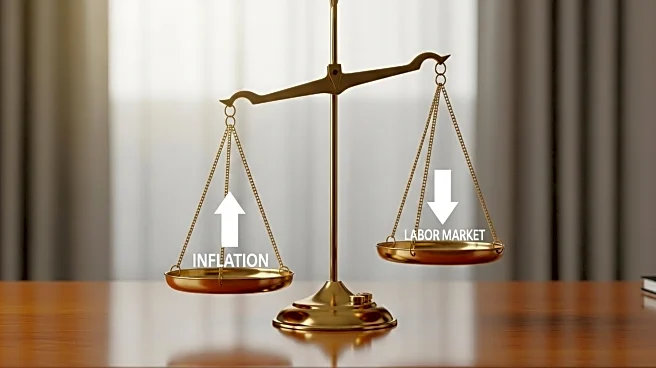What's Happening?
The U.S. economy has demonstrated resilience in navigating fiscal and monetary challenges since 2020, resulting in asymmetric investment outcomes across various sectors. Policymakers have focused on short-term stability through expansive fiscal measures and adaptive monetary policy, which have amplified sectoral divergence and reshaped risk allocation strategies. High tariffs, tax policy extensions, and Federal Reserve rate adjustments have created a landscape where some industries thrive while others contract. The fiscal landscape in 2025, marked by a $1.9 trillion deficit and a public debt-to-GDP ratio of 100%, highlights the tension between growth and sustainability. Mandatory spending on programs like Social Security and Medicare dominates outlays, while discretionary spending declines as a share of GDP. The 'One Big Beautiful Bill' has extended TCJA tax provisions, benefiting sectors like energy and defense, while high tariffs have imposed significant costs on households and industries.
Why It's Important?
The asymmetric investment outcomes resulting from U.S. fiscal and monetary policies have significant implications for various sectors. Energy and defense sectors benefit from expanded leasing opportunities and reduced royalty rates, while sectors like clothing and textiles face substantial price hikes due to high tariffs. These fiscal policies stimulate growth in certain areas while stifling it in others, depending on sectoral exposure. The Federal Reserve's policy shifts have further amplified sectoral divides, with rate cuts driving volatile investor sentiment. This has led to divergent outcomes, with high-growth sectors like technology and AI attracting capital, while trade-exposed industries face challenges. Investors must navigate a complex landscape where risk allocation hinges on nuanced assessments of policy direction, sectoral exposure, and behavioral dynamics.
What's Next?
As the Federal Reserve contemplates further rate cuts and fiscal policymakers debate tax reforms, the asymmetric outcomes of macroeconomic resilience are likely to persist. Investors will need to remain agile in their strategies, adapting to policy-driven growth and sectoral imbalances. The ongoing fiscal and monetary interventions may continue to reward sectors that align with policy priorities while penalizing those that do not. The future of U.S. economic policy will play a crucial role in shaping investment outcomes and determining which sectors emerge as winners or losers.
Beyond the Headlines
The deeper implications of these fiscal and monetary policies include ethical and cultural dimensions, as they highlight the disparities between sectors and the broader impact on society. The focus on short-term stability may overlook long-term sustainability, raising questions about the balance between immediate economic gains and future challenges. The entrenchment of sectoral imbalances could lead to increased dependency on policy-driven growth, affecting the overall resilience of the U.S. economy.











